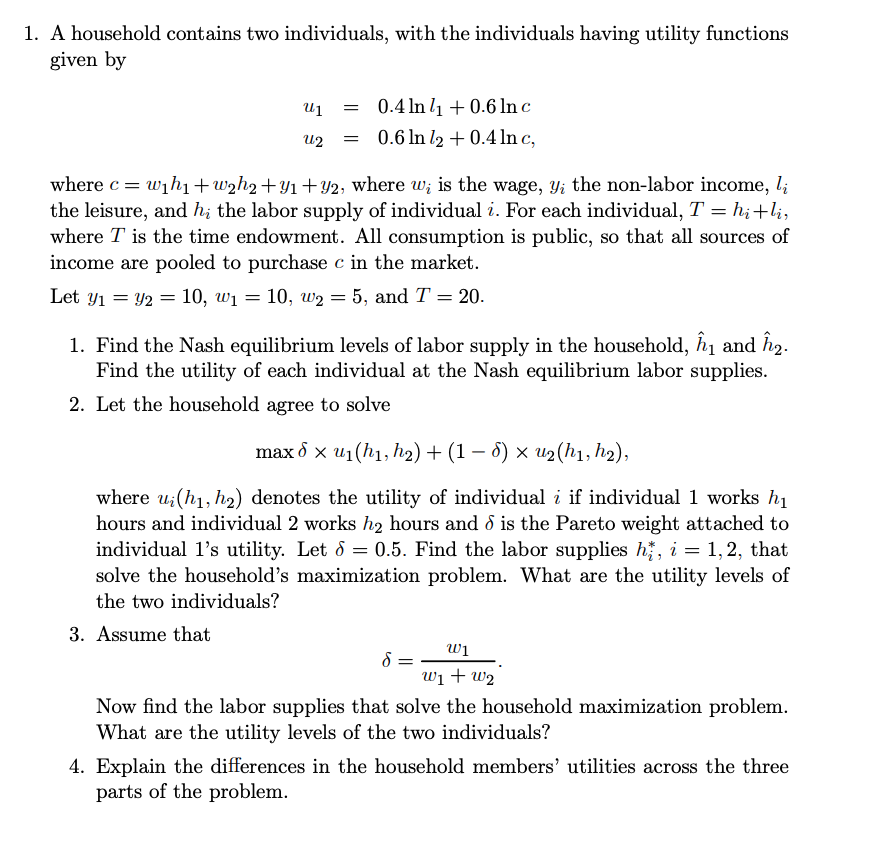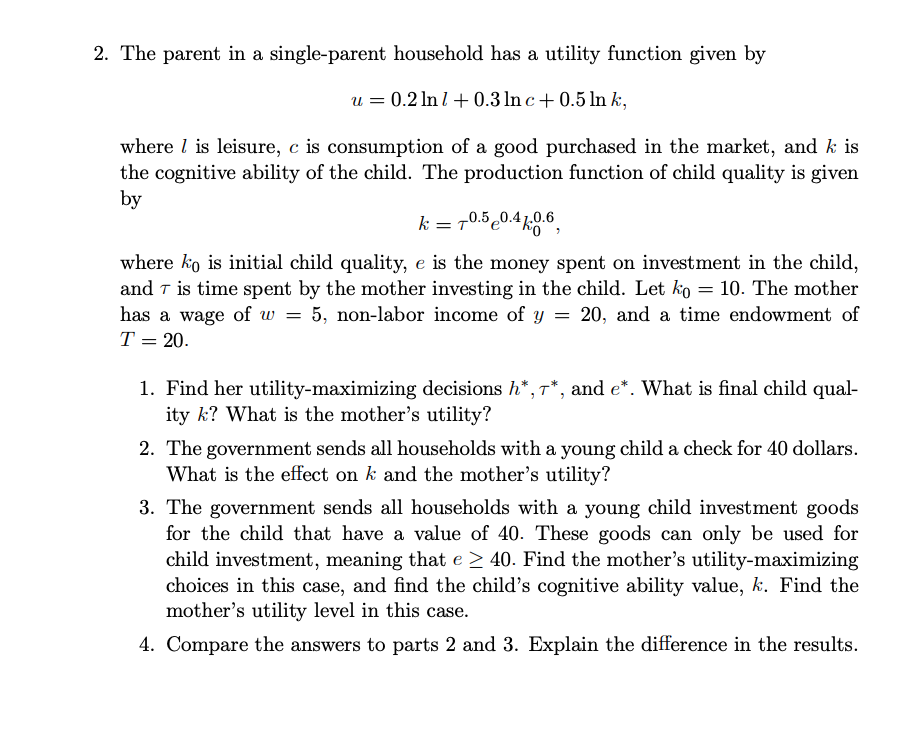Answered step by step
Verified Expert Solution
Question
1 Approved Answer
Hi, please help with these questions. Thank you! 1. A household contains two individuals, with the individuals having utility functions given by 11.1 = 0.4]n11+0.5lnc
Hi, please help with these questions. Thank you!


Step by Step Solution
There are 3 Steps involved in it
Step: 1

Get Instant Access to Expert-Tailored Solutions
See step-by-step solutions with expert insights and AI powered tools for academic success
Step: 2

Step: 3

Ace Your Homework with AI
Get the answers you need in no time with our AI-driven, step-by-step assistance
Get Started


